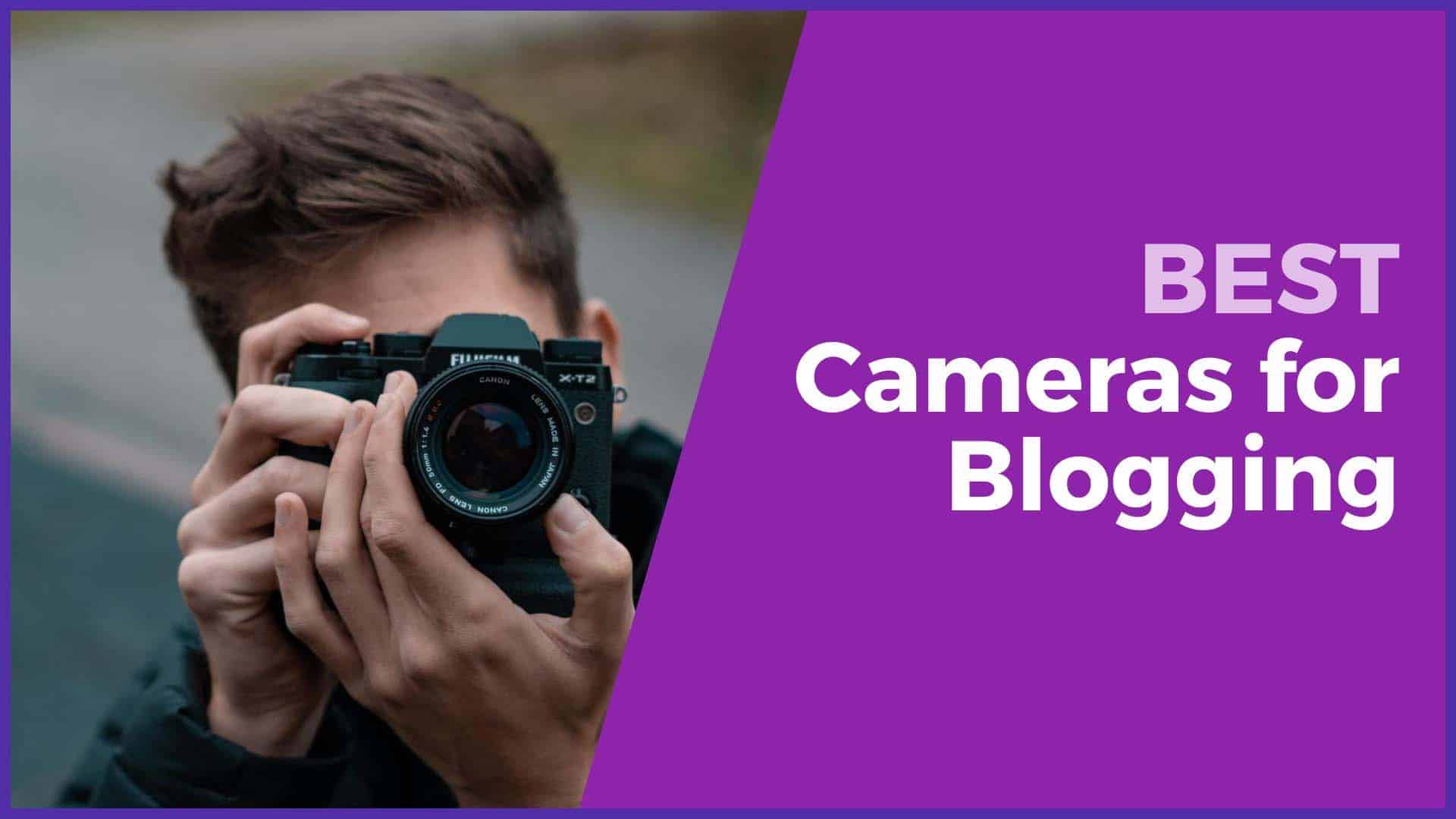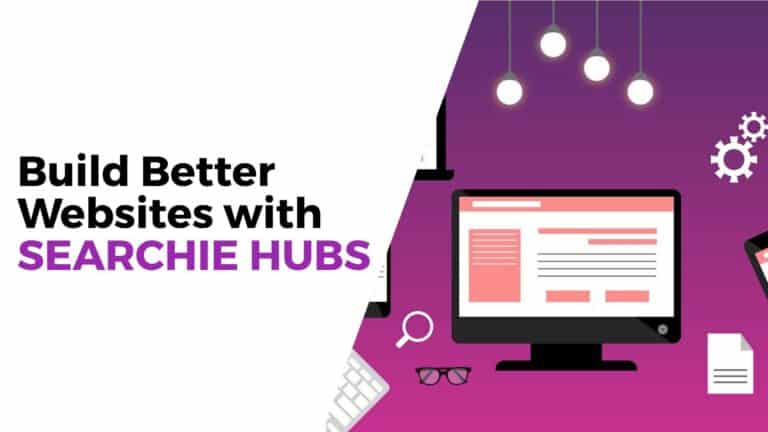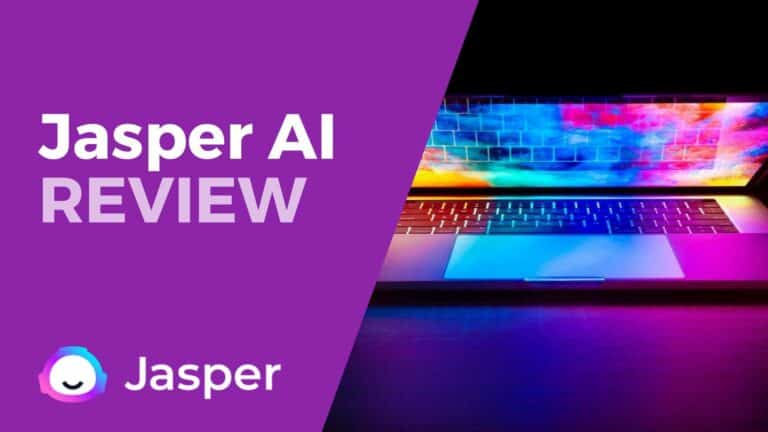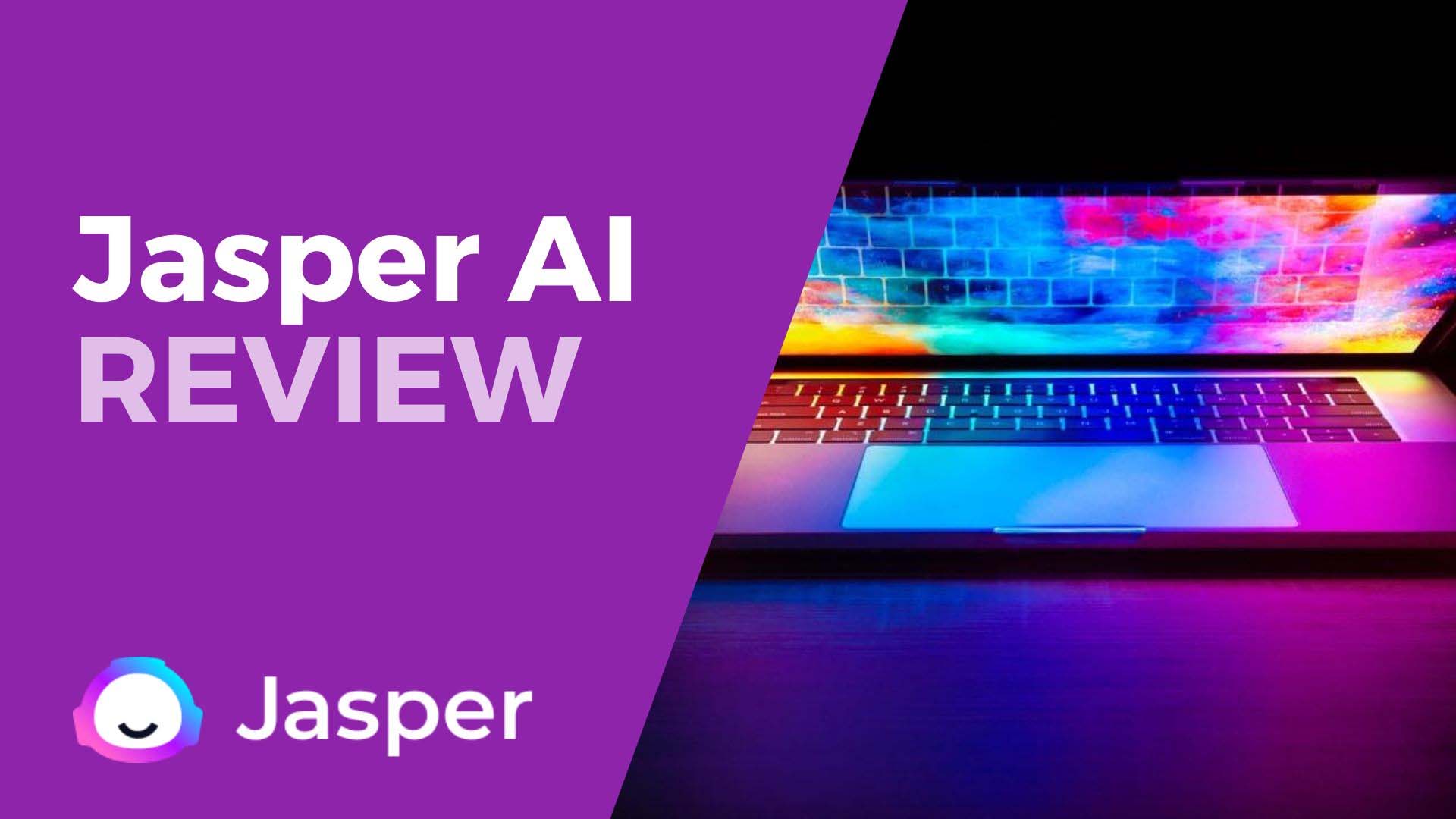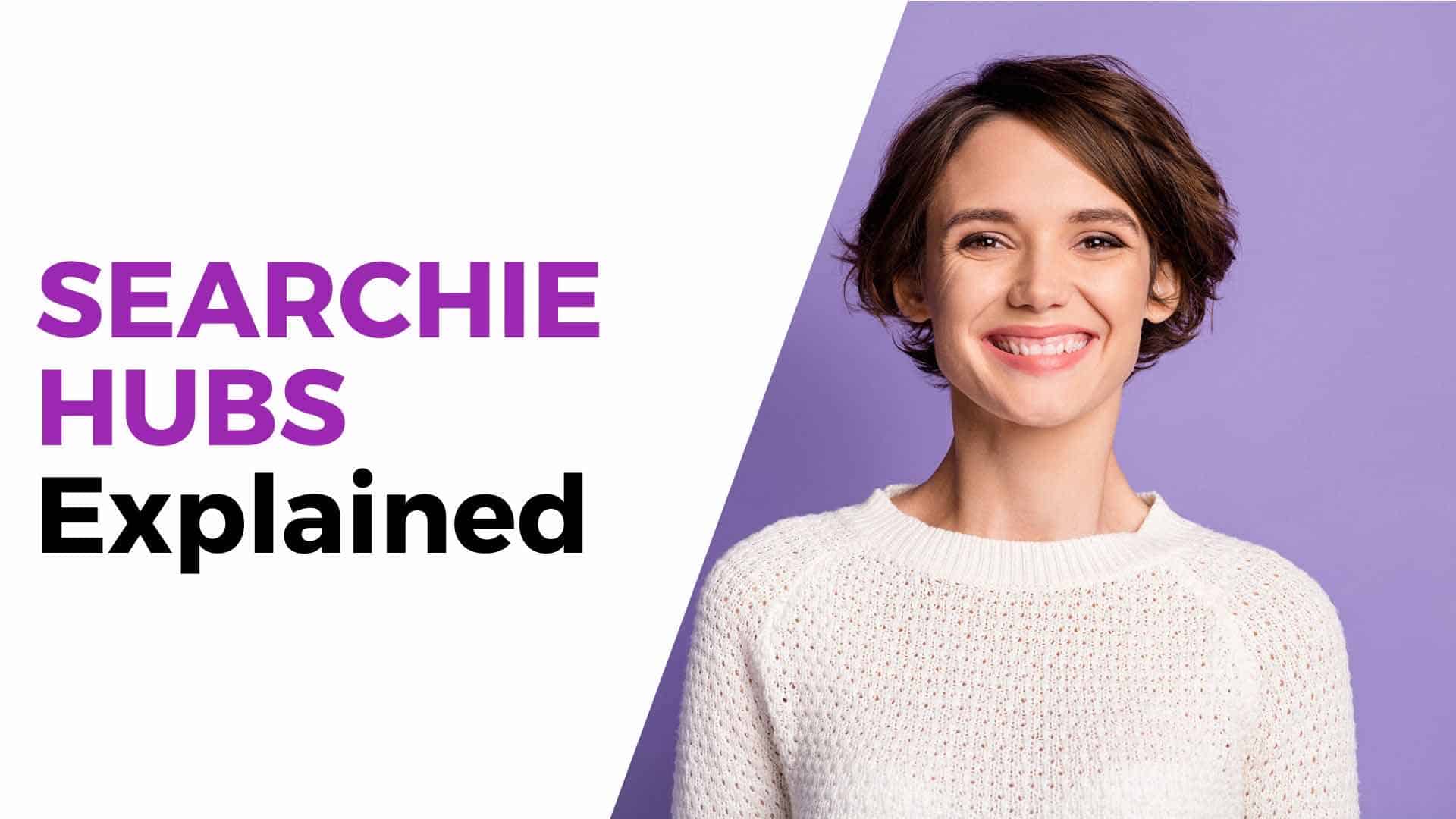The Best Cameras for Blogging: A Comprehensive Guide
If you’re a blogger, you know that having great content is only part of the equation. You also need to have great visuals to accompany your posts. That’s why it’s essential to choose the best camera for blogging.
This blog post discusses the different types of cameras best suited for bloggers and tips on choosing the right one for you. So, whether you’re looking for action, mirrorless, or DSLR cameras, we’ve got you covered while you look for the perfect camera!
Best Cameras for Blogging
The best cameras for blogging depend upon the images or videos you need for your blog. A good camera does the job you need without getting in the way of your activity. We have you covered whether you need cameras for blogging or a vlogging camera.
Here are our picks of the best cameras to help you get the amazing photos you need.
-
4.7$1,898.00Buy Now
The Sony a7 III is a professional-grade full-frame mirrorless camera that delivers stunning image quality and incredible shooting performance.
With a 24.2MP image sensor 15-stop dynamic range, this camera can capture stunning photos and videos in any situation. Compatible with all Sony E-mount lenses, it's a versatile tool for any photographer or videographer. Bluetooth connectivity allows you to connect your smartphone to the camera for remote control and image sharing. The Sony a7 III also features an impressive ten fps silent or mechanical shutter with AE/AF tracking and great battery life. Perfect for capturing fast-paced action shots or 4K video.
We earn a commission if you make a purchase, at no additional cost to you.
07/03/2025 06:49 am GMT -
4.7$996.95Buy Now
Do you love taking pictures and videos to share with your friends and family but are getting frustrated with the limits of your mobile phone camera? If so, the Nikon Z 50 is perfect for you.
This camera is designed for people who want to take great photos and videos to share online but don't necessarily consider themselves professional photographers. With its DX-Format sensor and NIKKOR Z DX 16-50mm lens, the Nikon Z 50 gives you the power to take stunning photos and videos that will wow your friends and followers. It's compact and works great as a webcam for YouTube live streams.
We earn a commission if you make a purchase, at no additional cost to you.
07/03/2025 06:49 am GMT -
4.6
$1,996.95$1,496.95Buy NowThe Nikon Z 6II is an excellent all-around mirrorless camera that performs well in almost any situation. It's comfortable to use, takes excellent photos, has a highly effective AF system, and can capture great video footage. This camera is the perfect choice for photographers who want a compact and capable camera to take stunning photos and videos.
The Nikon Z-mount lens system offers many choices for high-quality lenses to create storytelling photos.
We earn a commission if you make a purchase, at no additional cost to you.
07/03/2025 06:49 am GMT -
4.7$1,179.00Buy Now
The Canon EOS M50 Mark II is a versatile and powerful camera that is perfect for both stills and video. It features solid face tracking and eye detection, excellent out-of-camera JPEG quality, and RAW file support.
The camera is also compact and comfortable, with a good electronic viewfinder for daytime shooting. The Canon EOS M50 Mark II also supports external microphones and has an excellent touchscreen interface. In full auto mode, the Canon EOS M50 Mark II is a great camera for anyone looking for high-quality results.
You can connect it via USB to your computer and use it with Canon's EOS Webcam Utility software – your computer will then see the M50 II as a webcam, and you can live stream.
We earn a commission if you make a purchase, at no additional cost to you.
07/03/2025 06:49 am GMT -
4.7$529.00Buy Now
Looking for a powerhouse of a camera that won't weigh you down? Check out the Canon EOS Rebel T7 DSLR Camera with 18-55mm Lens.
This little number packs a big punch with a 24.1 Megapixel CMOS sensor that captures stunning detail. The advanced AF system makes it a breeze to get great shots, even in challenging light conditions, and the built-in Wi-Fi and NFC technology make it easy to share your photos with your friends and family. The Optical Viewfinder provides 95% coverage for those who like to keep things old-school.
This low-cost camera is lightweight at 1.04 pounds and takes great photos. Perfect for travel photos.
We earn a commission if you make a purchase, at no additional cost to you.
07/03/2025 06:49 am GMT -
4.4$249.99Buy Now
The GoPro HERO10 Black is the latest and greatest waterproof action camera on the market.
This camera features high-resolution photos and videos and high frame rates for smooth motion. Perfect for anyone looking to capture amazing footage of their outdoor adventures. With 8x slo-mo at 2.7K and the ability to pause videos and grab 15.8MP still photos from 5.3K video, the GoPro HERO10 Black is capable of capturing some truly incredible footage. Plus, with new water-shedding hydrophobic lens cover technology, you can rest assured that your images will always look their best, even in low light conditions.
We earn a commission if you make a purchase, at no additional cost to you.
07/03/2025 06:49 am GMT -
4.4
$99.99$89.99Buy NowThe Akaso Brave 4 is one of the best action cameras on the market. It is around a third of the price of the GoPro while offering decent build quality and functionality for you. The camera has a 20MP sensor and can shoot in 4K at 24fps. It also has built-in WiFi and comes with remote control. The camera is waterproof and has a 2-inch display.
We earn a commission if you make a purchase, at no additional cost to you.
07/03/2025 06:49 am GMT -
4.6$1,199.99Buy Now
The OM-D E-M5 Mark III is a high-performance mirrorless camera that is perfect for advanced amateurs and professional photographers. With a 20MP sensor, it can capture stunning images and videos. The portable, weather-sealed design makes it ideal for taking on the go, while the 121-point phase-detection AF system helps you easily take sharper photos and videos.
The in-body 5-axis image stabilization system gives you up to 5.5 EV steps of compensation, making it easier to get great shots even in low light conditions. And with the 50MP high-resolution shot feature, you can capture amazing detail and clarity in your photos and videos.
We earn a commission if you make a purchase, at no additional cost to you.
07/03/2025 06:49 am GMT -
4.5$368.00Buy Now
The Panasonic LUMIX FZ80 is a point-and-shoot long zoom camera that is perfect for capturing those far-away moments. This camera can capture stunning details and images with an 18.1 megapixel MOS sensor and 60X optical zoom.
The Power Optical Image Stabilizer ensures that your images are clear and sharp, even in low light conditions. The high resolution 1,170K dot viewfinder and rear touch enabled 3-inch LCD to make it easy to see your subject, even in bright sunlight. The 4K video capture mode lets you record beautiful 4K QFHD video footage at 30 frames per second, which you can then use to create amazing 4K photo montages.
We earn a commission if you make a purchase, at no additional cost to you.
07/03/2025 06:49 am GMT -
4.7$1,449.00Buy Now
The advanced video capabilities of the Canon PowerShot G7 X Mark II digital camera can capture any moment in stunning detail. Featuring a large 1.0-inch, 20.1 megapixel CMOS sensor, the PowerShot G7 X Mark II is equipped to capture high-quality images and videos with a wide dynamic range.
The autofocus system features tile autofocus and manual focus for greater precision, while the 3.0-inch LCD monitor tilts up 180 degrees and down 45 degrees for easy self-portraits. With the ability to shoot continuously at up to 8 fps, you can easily capture incredible images. Plus, built-in WiFi allows you to post your images online easily.
We earn a commission if you make a purchase, at no additional cost to you.
07/03/2025 06:49 am GMT
What Type of Blogger Are You?
We cover different types of cameras because there are so many bloggers and content creators.
Are you into action? You’ll need a small, durable action camera that provides a wide angle of view.
Are you a fashion blogger? If so, you’ll need a camera to capture great detail and color. You’ll also want a portable camera to take you on the go.
Are you a travel blogger? If so, you’ll need a camera that’s rugged and durable. It should also be able to take high-quality photos and videos. You may need a camera with WiFi to easily transfer your photos to a mobile phone and post them on social media while traveling.
Are you a food blogger? If so, you’ll need a camera to capture close-ups and action shots.
Perhaps you have a YouTube channel to complement your blog. You’ll need a camera with high-quality video and a dummy battery to provide continuous power. Otherwise, you’ll frequently swap out batteries to keep the camera charged.
Deciding on the best cameras for blogging depends on the photos you need to take. A blogging camera for someone into dirtbikes is very different than what fashion bloggers need.
There is no perfect camera for all needs, so you may find that you need more than one camera to cover all the aspects of your photo and video needs. Professional photographers know that you often need more than one camera for the job because the jobs are different.
1: Travel Bloggers
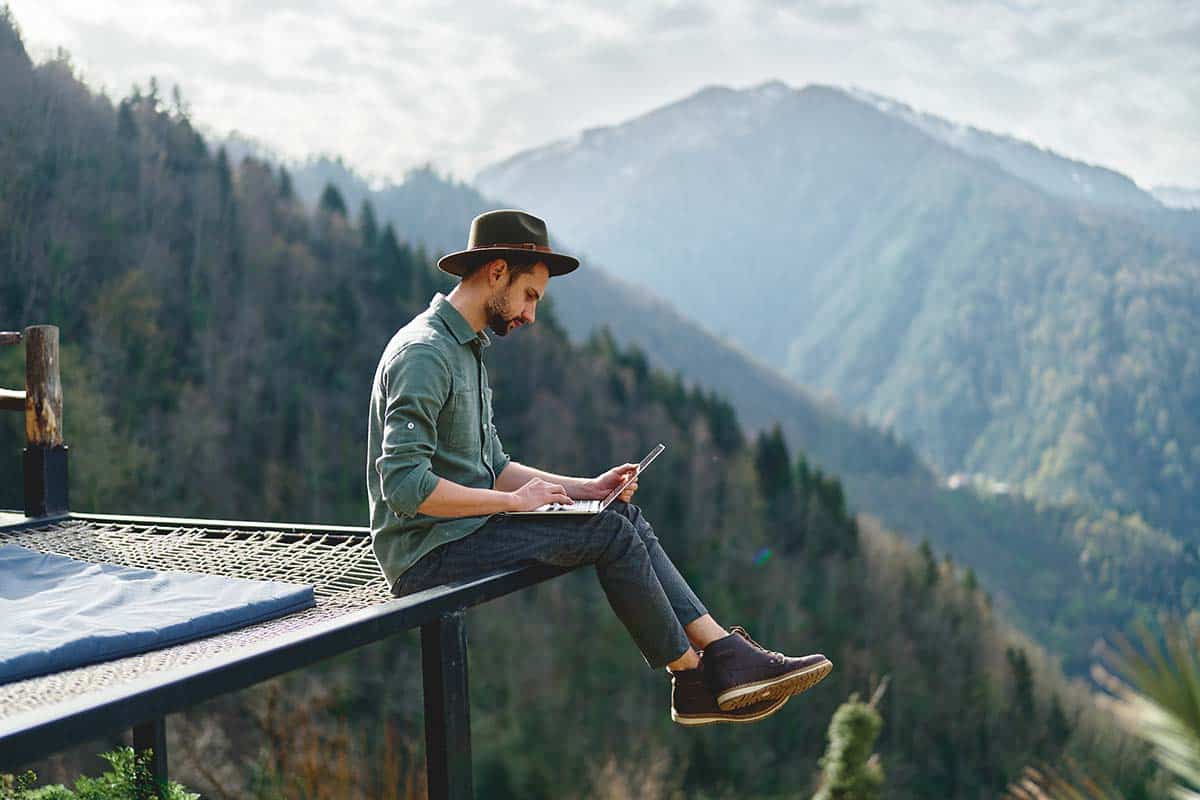
A travel blogger is someone who shares their experiences while traveling. They may take photos and videos of the places they visit and the people they meet along the way.
To best record their travels, travel bloggers need a camera that’s both portable and durable. It should also be able to take high-quality photos and videos.
Some of the best cameras for travel bloggers include the Sony RX100, the Olympus OM-D E-M, and the Panasonic Lumix DMC-ZS100. Each of these cameras is compact yet capable of taking stunning photos and videos. They’re also durable enough to withstand the rigors of travel.
2: Action Blogger
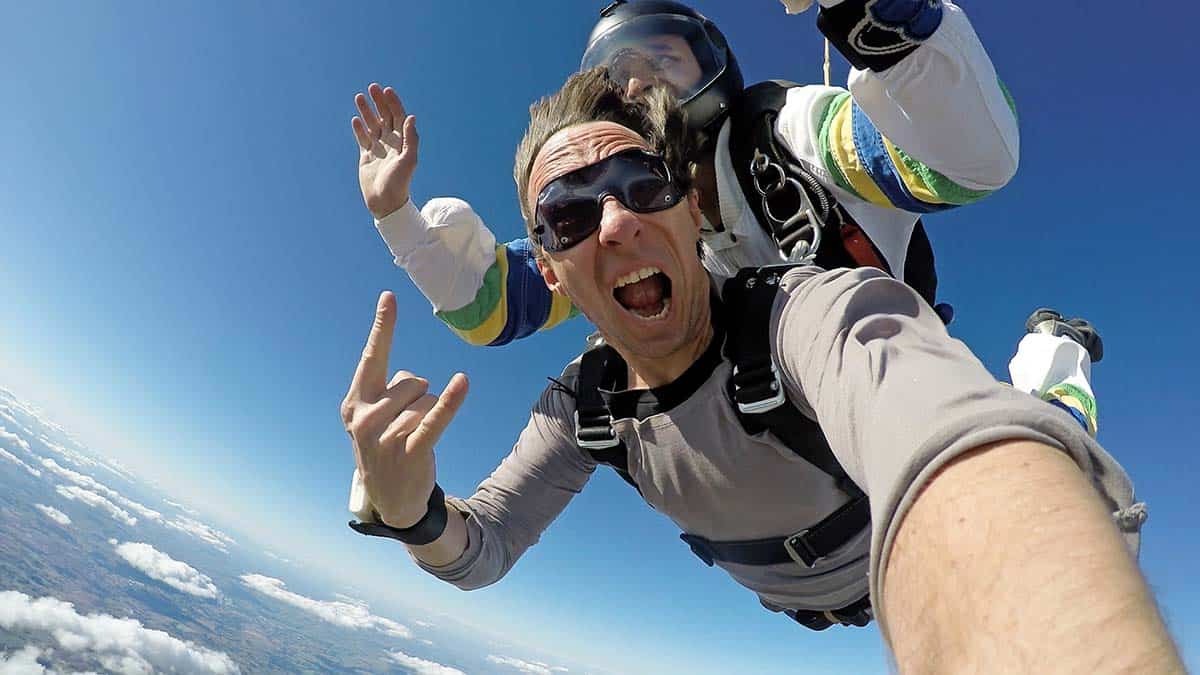
An action blogger writes about their adventures, often involving outdoor activities like hiking, biking, and camping. They may take photos and videos of the places they visit and the things they do.
To best capture their adventures, an action blogger needs a small, durable camera that provides a wide angle of view. Some of the best cameras for action bloggers include the GoPro HERO, the DJI Osmo Action, and the Sony FDR-X3000.
These cameras are durable and take great photos and videos, even in tough conditions. They’re also small enough to be easily portable, so you can take them anywhere your adventures take you.
3: Fashion Blogger
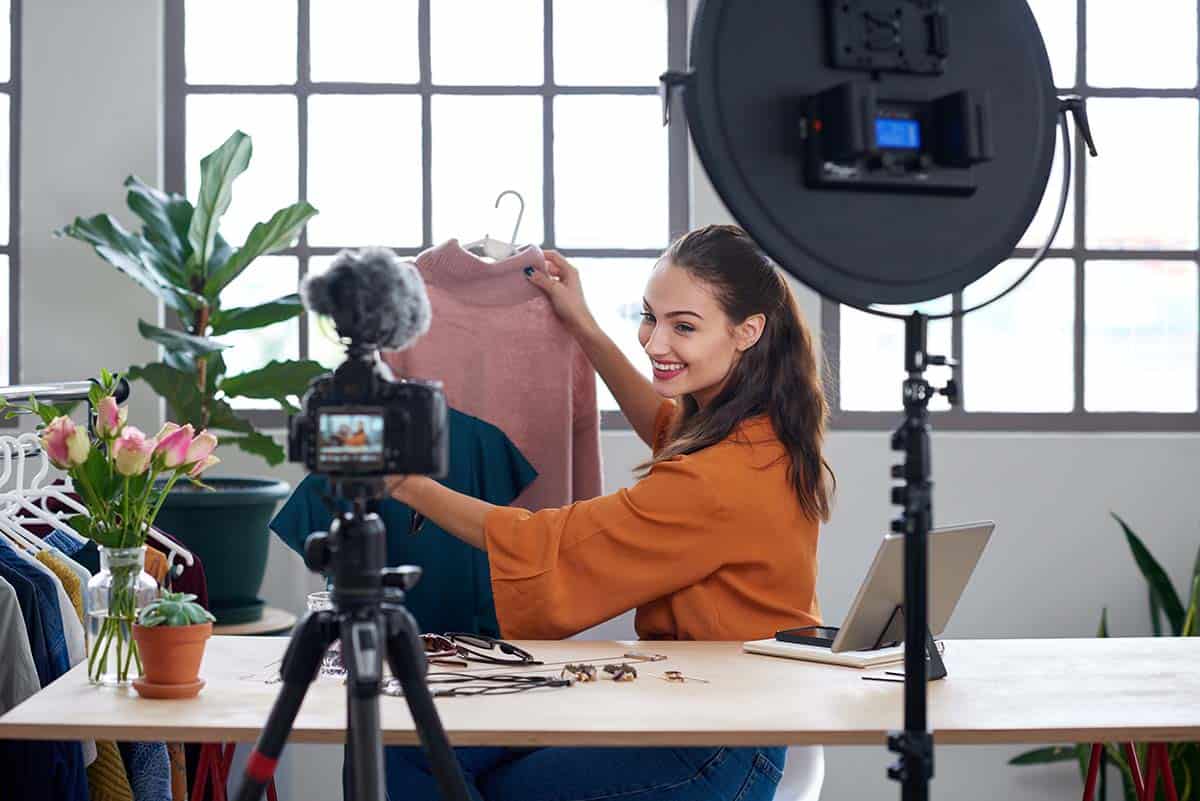
A fashion blogger is someone who shares their style and fashion tips. They may take photos and videos of the clothes they wear, the places they go, or the people they meet.
Fashion bloggers need a camera to capture great detail and color photos to best capture their style. They’ll also want a portable camera to take on the go.
The best cameras for fashion bloggers include the Canon EOS Rebel, the Nikon Z50, and the Sony Alpha a6400. These cameras are capable of taking stunning photos and videos. They’re also lightweight and portable, making them perfect for fashion bloggers who are always on the go.
For photos or videos of fashion runway events, a larger camera like the Sony A7iii or the Nikon Z6 II is more capable of fast action photography. They’re also better for portrait photos of models wearing fashion pieces.
4: Food or Product Blogger
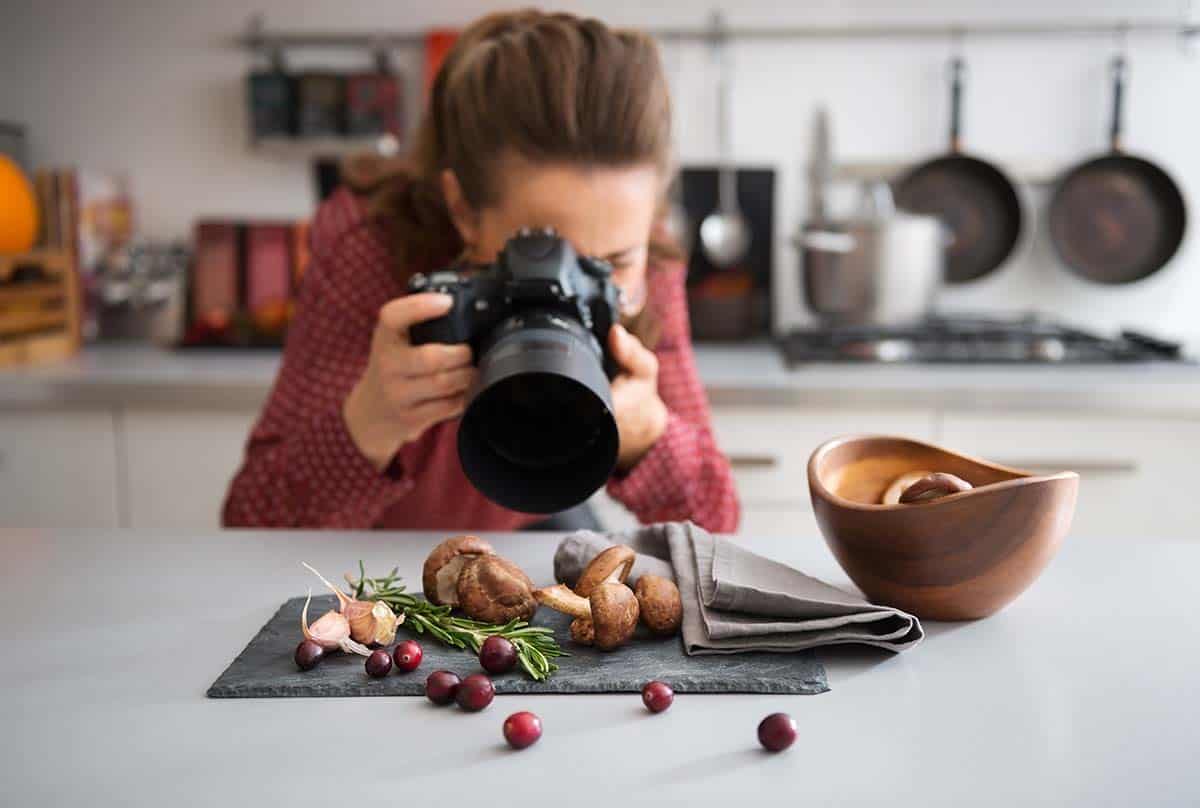
A food blogger writes about food, often sharing recipes and tips on cooking. They may take photos and videos of the food they make.
To best capture their culinary creations, a food blogger needs a camera to take close-ups and action shots. Food bloggers may also want video recordings to demonstrate how they prepare meals, organize their tools, or show ingredients before the final dish.
The best cameras for food bloggers include the Canon EOS Rebel, the Nikon Z6 II, and the Sony Alpha a6400. These cameras are great for taking close-ups and detailed photos of food. They’re also lightweight and portable, so you can take them to shoot on location.
What Makes a Good Blogging Camera?
Everything in photography is a compromise. When deciding upon the best cameras for blogging. You may decide to sacrifice some features for others that are more important to you.
For example, a good vlogging camera needs to be lightweight. A good action camera likely needs to be waterproof. The best camera for food or fashion needs great image quality.
A great camera for travel may need great battery life, or you may prioritize a cheap camera in case it gets lost, damaged, or stolen. Whatever new camera you need, consider the compromises you need to get the benefits and features most important to your objectives.
Let’s look at the factors that help you decide what makes your best blogging camera.
1: Image Quality
We all want a good camera with great image quality, but many factors influence high-quality images.
The camera’s sensor has much to do with image quality, as does your choice of lens and lighting conditions.
Look for a camera with sharp images and a high dynamic range. Full frame cameras typically have the best image quality due to the larger sensor size. However, large cameras mean more weight.
That’s fine when your camera is on a tripod or using it as a webcam. Size and weight are issues that may not be best for people on the go, like travel photographers.
For bloggers, image quality is essential for creating great visuals for your articles. But it’s not the only factor to consider when choosing the best blogging camera.
2: Image Stabilization
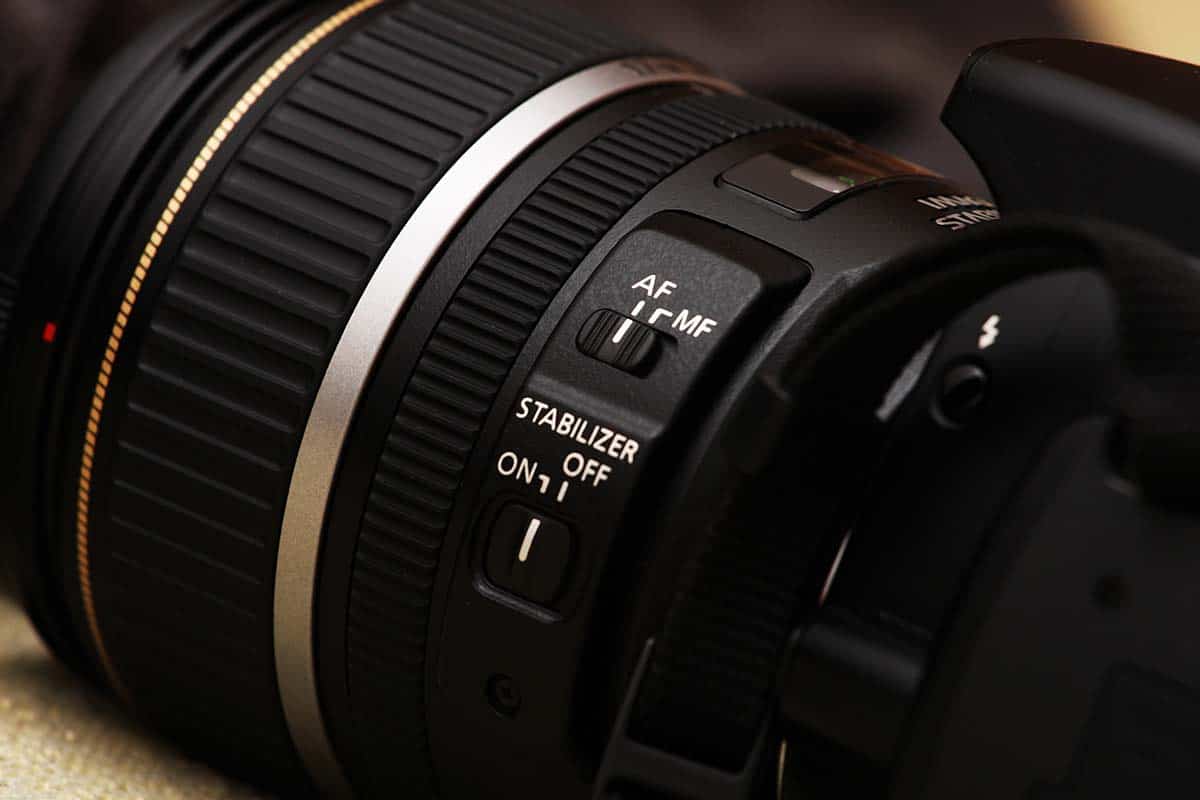
Image stabilization is a feature in cameras that helps to keep the camera still while taking photos or videos. This is especially important when using a long lens or hand-holding the camera.
Cameras with image stabilization use gyroscopes and sensors to detect and counteract movement by moving the lens or image sensor. This helps to keep the image or video sharp and clear.
Image stabilization is important for bloggers who want to take photos or videos while on the move. This could be fashion bloggers walking the runway or travel bloggers exploring a new city.
Some image stabilization systems are better than others, so it’s worth researching to find the best one for your needs.
Keep in mind that there are two places to find image stabilization. Some cameras have interchangeable lenses, and you may find the feature in different lenses.
Other cameras have built-in image stabilization within the body of the camera, so it works regardless of the lens. In body image stabilization isn’t always as good as lens stabilization, but it’s always there.
Definitely look for image stabilization to help reduce blurry photos caused by camera shake.
3: Video Quality
If you’re planning to use your camera for vlogging or on YouTube, video quality is an important factor to consider.
Video quality is the level of detail and clarity in a video. A higher video quality means more detail and clarity in the image. This can be measured by the number of pixels in the image or by the number of frames per second. Higher video quality also means that the video will take up more space on your computer or mobile device.
When choosing a camera for vlogging or YouTube, look for a camera with 1080p or, even better,
a resolution of 1440p. 60fps is standard for most videos, but if you want to create slow-motion videos or record action shots, look for a camera that can shoot at 120fps.
Most cameras nowadays can shoot high-quality video, but some stand out from the rest.
Look for a camera with 1080p or even 4K resolution and high frame rates like 60fps or 120fps.
You’ll also want to look for a camera with good autofocus and image stabilization. And don’t forget about audio quality!
Some bloggers use an external microphone to get the best sound, but many cameras have decent built-in microphones.
4: Video Recording
When choosing a camera for video recording, there are a few things to consider.
First, you’ll want to decide what format the videos will be in. There are two main formats: NTSC and PAL.
NTSC is used in North America, Central America, South Korea, and Japan. PAL is used in Europe, Australia, New Zealand, and China.
If you’re planning to record videos for YouTube or other online platforms, you’ll want to choose a camera that records in the NTSC format.
The second thing to consider is the frame rate. The most common frame rates are 24fps, 25fps, 30fps, and 60fps.
The frame rate is the number of frames per second that the camera records. A higher frame rate means a smoother video, but it also uses more storage space.
For most blog videos, 30fps is a good option. If you’re planning to do any slow-motion recording or capture fast-moving action, you’ll want to choose a camera that can record at 60fps.
And finally, you’ll want to consider the video resolution. The most common resolutions are 1080p and 4K.
1080p is full HD and is the minimum resolution you should look for in a camera.
4K resolution is better than other resolutions because it has more detail. Getting a camera that records in 4K might be a good idea, so your videos look great. Remember that 4K takes up more storage space on your computer or mobile device and requires more bandwidth when watching them online.
When choosing a camera for video recording, look for one that records in the NTSC format, has a frame rate of 30fps or 60fps, and has a resolution of 1080p or better.
5: Image Sensor
The image sensor is the part of the camera that captures light and turns it into an image. There are two main types of image sensors: CCD and CMOS.
CCD sensors are found in most point-and-shoot cameras and some DSLR cameras. They’re good for taking pictures in low light and taking videos.
CMOS sensors are found in most DSLR cameras and some point-and-shoot cameras. They’re good for taking photos in low lighting conditions, taking videos, and shooting fast action shots.
When choosing a camera, the image sensor is an important factor to consider. If you’re planning to take mostly photos, look for a camera with a CCD sensor.
If you’re planning to take mostly videos or shoot fast action shots, look for a camera with a CMOS sensor.
Some cameras have both types of sensors, so you can choose which one to use depending on the situation.
6: Lens Mount
The lens mount is the part of the camera that the lens attaches to. There are three main types of lens mounts: Canon EF, Nikon F, and Sony E. Nikon now have a Z-mount range for its mirrorless cameras. Other vendors have also come out with some new lens mount formats.
Canon EF lenses are compatible with Canon DSLR cameras. Nikon F lenses are compatible with Nikon DSLR cameras. Sony E lenses are compatible with Sony mirrorless cameras.
When choosing a camera, the lens mount is an important factor to consider. If you have a specific brand of lenses that you want to use, make sure the camera you choose has the same type of lens mount.
If you don’t have any particular brand of lenses in mind, you can choose any type of camera. Remember that you’ll need to buy lenses separately unless you choose a camera without interchangeable lenses.
7: Flip Screen Orientation
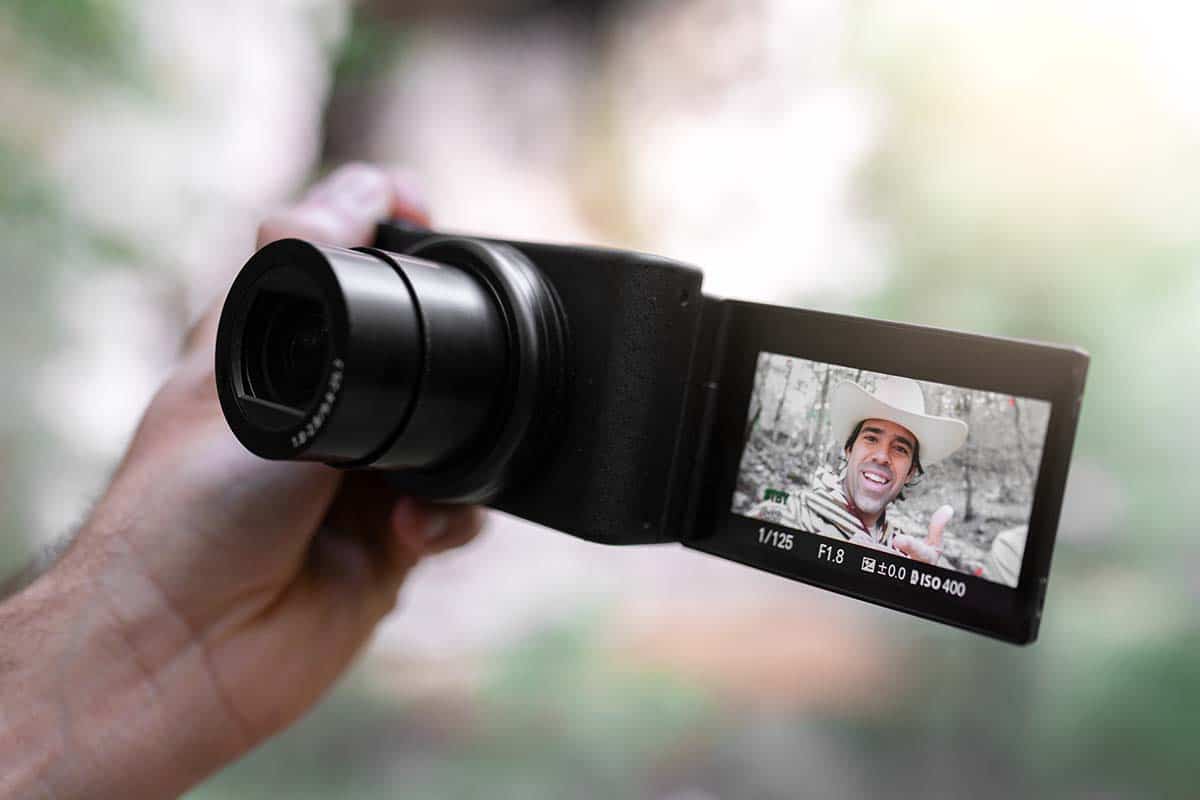
Cameras with a flip LCD screen allow you to see what the lens sees. There are three popular orientations for a screen to flip.
Each orientation has its benefits and problems.
An LCD screen above the camera makes it easy to see but may be blocked if you have an external microphone mounted in the camera hot-shoe.
The Nikon Z50 has a screen that appears below the camera. However, mounting the camera on a tripod blocks the view from this angle. Fortunately, you can get a bracket that has a tripod mount on the side of the camera and permits a clear view of the flip screen.
An LCD screen that opens on the side of the camera avoids issues with the top or bottom problems. However, it also means that you look away from the lens when you look at the screen during selfy-style videos.
Remember that not every LCD screen can flip around. Some remain on the back of the camera whether they can lift off the body or not.
8: Battery Life
Great battery life is one of the most important things to all photographers on the go. We can only carry so many batteries with us. Having a battery die during a video is definitely a problem.
DSLR cameras have the best battery life. This is because they have a mechanical shutter that only opens when you take a photo. Mirrorless cameras use an electronic shutter that’s always open, so they use more power and have shorter battery lives.
When choosing a camera, the battery life is an important factor to consider. A DSLR camera is a good choice if you plan to take more photos than video.
A mirrorless camera is a good choice if you plan to take mostly videos or shoot fast action shots.
For people interested in video blogging at home or perhaps creating YouTube videos from home or studio, look for a camera that has a dummy battery to provide continuous power.
9: Continuous Shooting Capabilities
For still photographers, continuous shooting is the ability to rapidly capture photos while holding the shutter down to capture fast action.
For video, continuous shooting is mostly about having continuous power, as we mentioned in the battery life section.
Not all cameras have the same continuous shooting capabilities. Some cameras are better suited for still photography, while others are better for video or fast action.
Reading reviews and comparing features is the best way to figure out which camera is best for you.
To capture fast action with still photos, look at your camera’s frame rate and buffer size. You’ll also want a camera that can quickly write to the memory card to empty the buffer.
10: Low Light Performance
Cameras with great low light performance can shoot in near darkness and still produce good quality images. This is because they have large sensors that gather more light than a camera with a small sensor.
DSLR cameras tend to have better low-light performance than mirrorless cameras. This is because DSLRs have larger sensors and use a mechanical shutter.
Mirrorless cameras use an electronic shutter that can introduce noise into the image, making it more difficult to shoot in low light.
When choosing a camera, consider low light performance’s importance to you. A DSLR may be better if you plan to shoot in difficult lighting conditions.
A mirrorless camera may be a better choice if you don’t plan to shoot in low light or if you’re interested in shooting video.
Your choice of the lens also affects low light performance. A lens with a large aperture allows more light to hit the sensor, increasing your chances of better photos in limited lighting conditions.
11: Camera Size
Your camera for blogging may be any size or weight. The question is whether the size of your camera becomes an impediment to capturing your favorite subject.
For example, a larger camera may be more difficult to use with small hands. Shooting video in tight spaces may be more difficult with a larger camera. Getting a comfortable camera is one of the most important things to consider. Size, weight, and how it feels in your hands can be a deciding factor for your new camera.
A smaller camera may be easier to carry and less obtrusive when taking photos or videos in public. But a smaller camera also has some disadvantages.
A smaller camera may have a smaller sensor, which means it won’t perform as well in low light or produce high-quality images.
It may also have fewer features and shooting modes than a larger camera. When choosing a camera, decide what size works best for you and your needs.
Do you want a small camera that you can easily carry with you or a larger one with more features?
It’s important to find the best balance of size and features for your needs.
12: WiFi and Mobile Apps
Today’s content creators know their audience wants up-to-the-minute content. That’s why you may want to look for a digital camera with built-in WiFi and a compatible mobile app.
These features allow you to transfer a photo from your camera to your mobile device so you can immediately share to social media services like Facebook, Instagram, and Twitter.
Types of Blogging Cameras to Consider
They say the best camera is the one you have with you. In many cases, that’s the camera phone on your iPhone or Android device.
Despite all of the advances in mobile phone photography, they still don’t compare to the best cameras on the market.
Whether you need a budget camera or the best mirrorless camera on the market, you can find a great camera for blogging that allows you to control your exposure to get the creative results you need.
That means you control:
Those variables allow you to make creative decisions with your camera, which makes a good camera.
Action Cameras
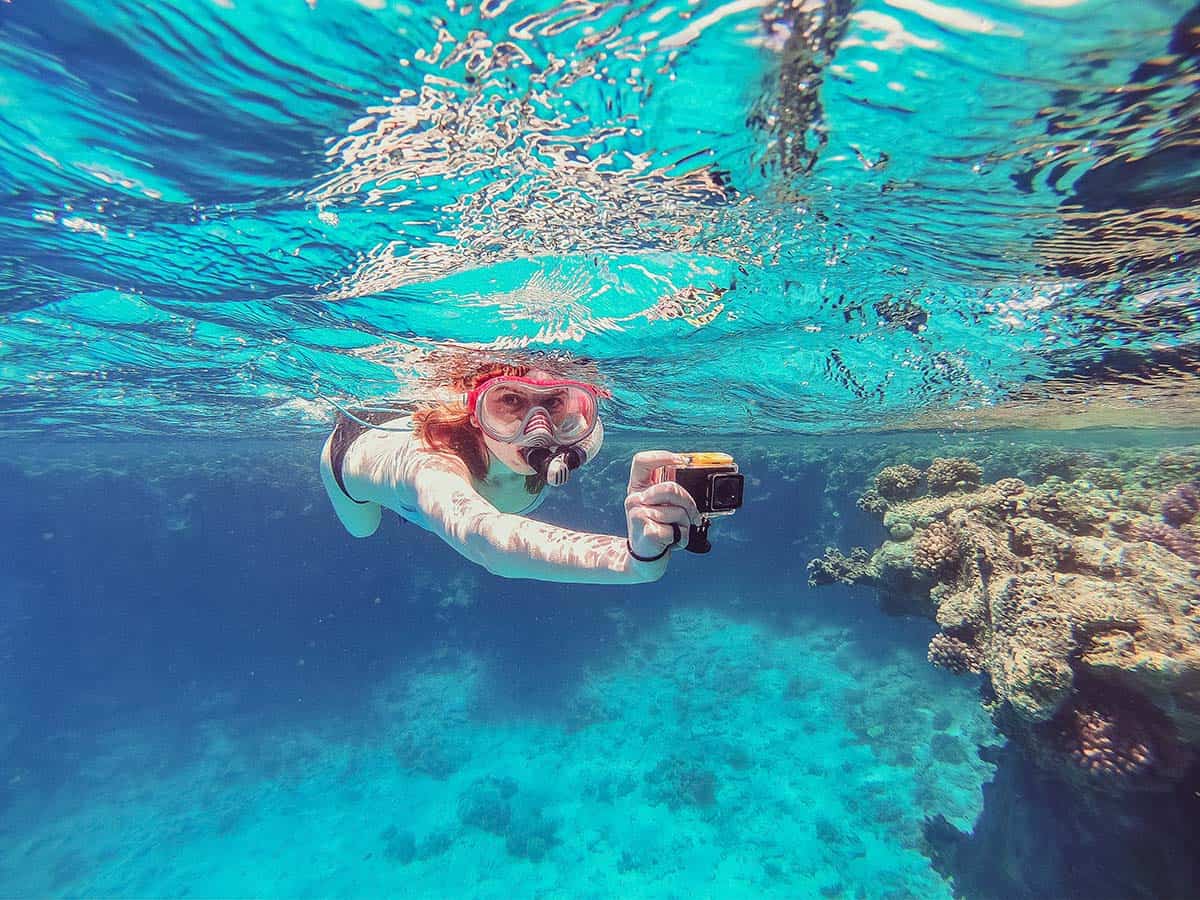
An action camera is a small, lightweight camera designed to be mounted on helmets, bikes, cars, or other moving objects.
Benefits of an action camera include:
You may need a small camera to mount on your body, bike, car, or surfboard. The camera must be waterproof and weatherproof to endure different conditions and get shots that other cameras can’t take.
The GoPro Hero line is the most popular action camera, but other options may work for your needs and budget.
You get a lot of features packed into such a small camera!
Mirrorless Cameras
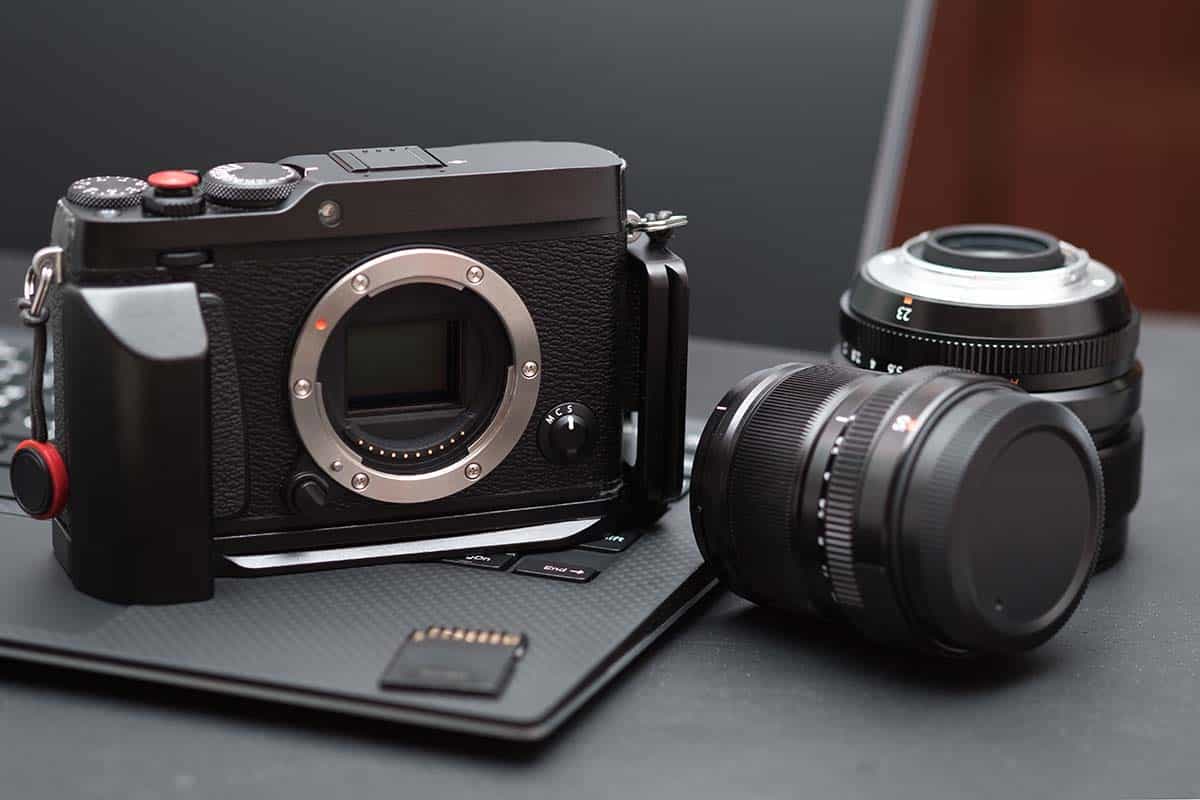
A mirrorless camera is a digital camera that doesn’t have a mirror or optical viewfinder. Everything is electronic, which has some pros and cons.
On the positive side, mirrorless cameras can operate silently because there’s no mechanical shutter to make a sound.
Because it was silent, professional photographer Dave Black got one of the first photos of a golfer’s backswing using a mirrorless camera. Before that, it was bad form to disrupt a professional golfer mid-swing because of the noise with mechanical shutters.
Mirrorless cameras are great for video blogging, as they don’t have the same 30-minute video recording limitations as DSLRs. Sony cameras have a great reputation as the best vlogging camera.
On the negative side, mirrorless cameras chew through batteries to power everything from the sensor to the electronic viewfinder. They don’t have the same battery life as DSLRs do.
Mirrorless cameras are the future for most photography. Canon and Nikon have eliminated future DSLR development and will only make mirrorless photography equipment.
DSLR Cameras
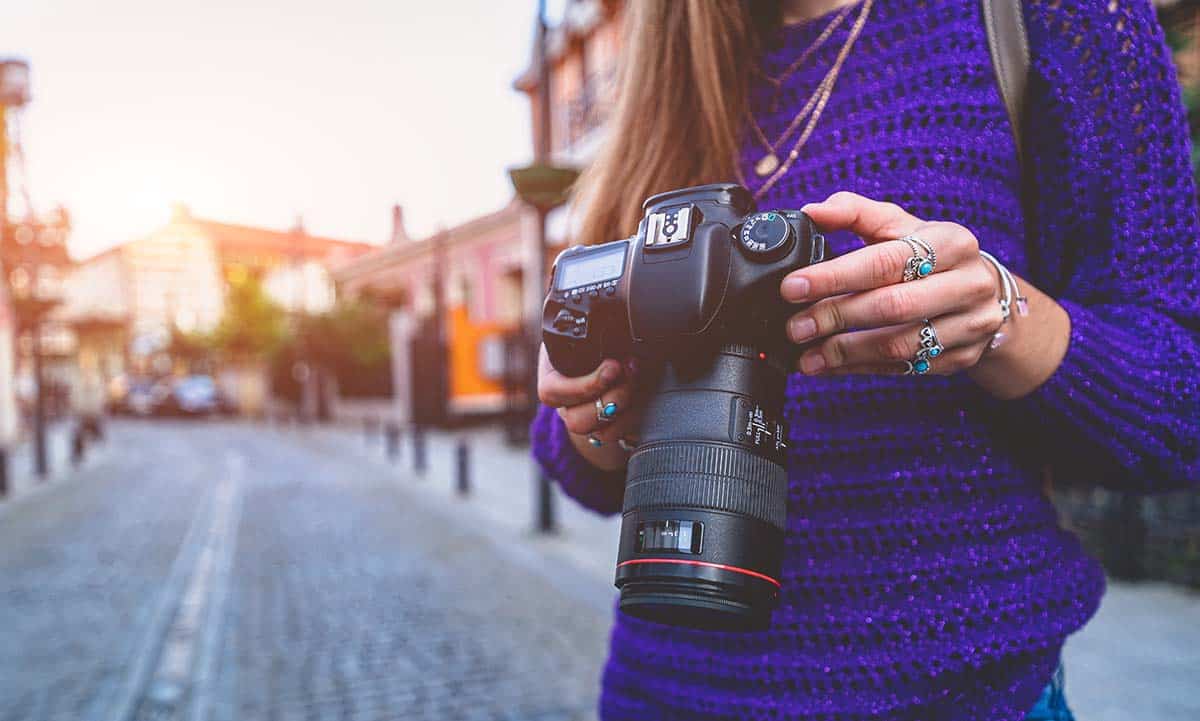
A digital camera with a mirror is a DSLR (Digital Single Lens Reflex). This mirror helps you see what the picture will look like. It also has an optical viewfinder to help you take pictures.
When comparing DSLRs to mirrorless cameras, the biggest advantage of a DSLR is the battery life. The camera mirror means less power is used, and you can take more pictures on one battery charge.
DSLRs also have a long history, meaning more lenses are available for these cameras. More lenses for mirrorless cameras are coming out, so they’re catching up due to market demand.
Some vendors, like Nikon, have an adapter to permit their DSLR lenses to work on mirrorless cameras.
While a traditional DSLR camera is falling out of new development, they are still excellent choices for still photography. A small DSLR, like the Panasonic Lumix, is a great travel camera because of its great battery life, small size, and image quality.
Compact Camera
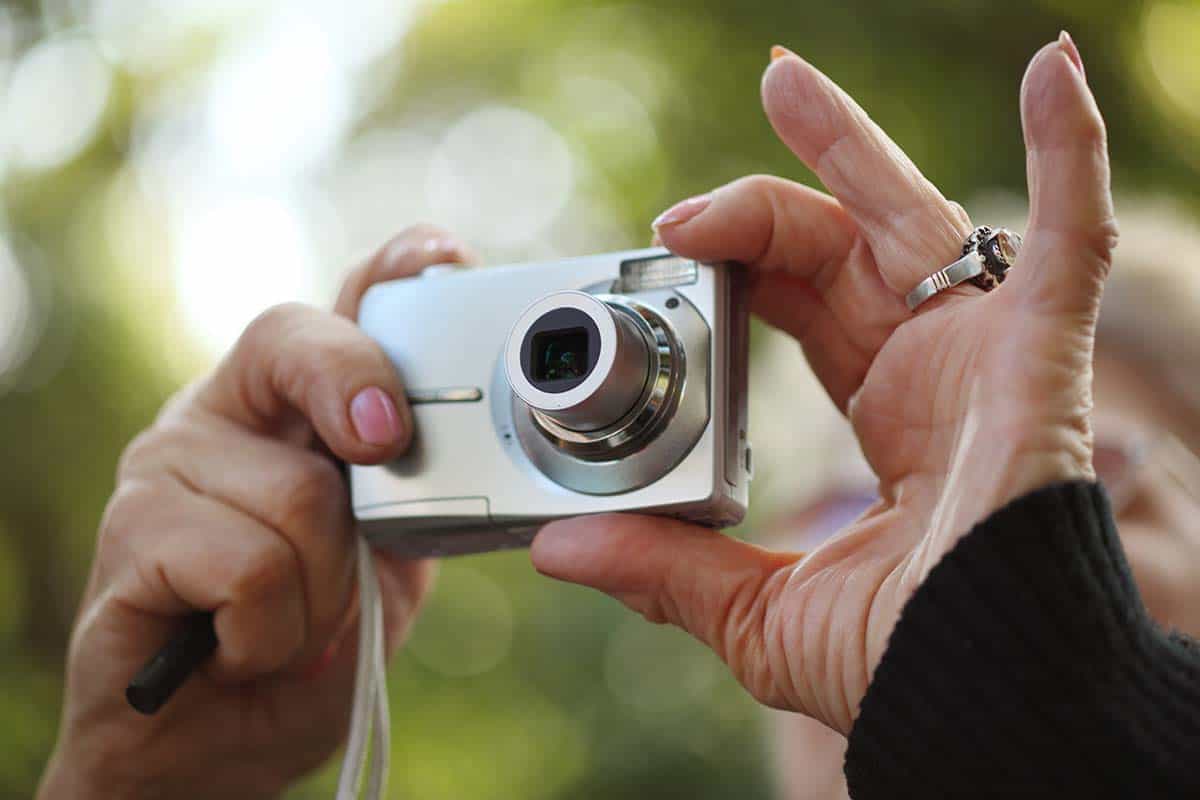
Compact cameras, also known as point-and-shoot cameras, are useful choices when you need something with more range than a mobile phone camera but don’t want a heavy camera to weigh you down.
Some compact cameras (point and shoot cameras) even can shoot in RAW mode, giving you more control over post-processing your images.
The Canon Powershot G7 x Mark II is one of my favorite compact cameras to use on the go. It has nice video quality and takes nice images in available light conditions.
Camera Accessories to Consider
The best camera is worthless without some useful accessories. Here are a few things you need to include with your camera purchase.
1: Camera Bag
Camera bags do more than storing your camera. They also protect it and organize your lenses and accessories. They come in different sizes and styles.
I have more bags than I ever imagined, but they all do a different job. Rolling bags are great for carrying a lot of gear on an airplane or studio session. However, they are bulky and heavy.
Many people like backpacks because it’s easy to walk around with them, and they can hold as much or as little as you like. The downside is that you generally have to take them off to get inside.
A sling bag or a shoulder bag allows easy access to your camera and equipment while you’re wearing the bag. They don’t hold as much as a rolling bag or a backpack.
2: Tripod or Stand
A tripod is an important accessory for any photographer, whether shooting video or taking low-light photos.
The best tripods are lightweight, portable, and easy to set up. The Joby Gorillapod is a great option because it’s flexible and can wrap around trees or fences.
Your choice of a tripod may require something larger and sturdy for heavier cameras. Those tripods offer more stability than small travel tripods and can withstand wind vibration.
A center rise is an important feature to consider. The riser extends upward from the center of your tripod to allow more height and often allows the tripod’s overall weight to be lighter. The downside is that center risers are more susceptible to shaking than a large tripod.
3: Memory Cards
Whatever camera you choose, you need memory cards to store your photos and video. As with most things, there are many options, and you must get the right card that works not only with your camera but also has the capacity and capabilities for your content.
First, check to see which type of memory card you need. There are SD cards, Micro SD cards, Compact Flash, and other types of storage for your camera.
SD, SDHC, and SDXC are the three most common types of memory cards.
Next, you’ll need a card reader to import your photos and video to your computer. Many computers have an SD card reader, but you’ll have to buy an accessory to read other memory card types.
Some cameras include WiFi and a mobile phone app to transfer so you can post to social media without waiting to get back to a computer.
Check to see what storage capacity you have on your memory card. More storage capacity costs more per card, but it may cost less than buying two lower-priced cards to achieve the same total capacity.
Consider whether you want a large card that puts all of your content in one location or if you want to separate your photos and videos among multiple cards.
Finally, look at the speed of your card. It is important to know if your card can write data as fast as your camera sends it. For 4K video recording, SDHC and SDXC are your best bet for performance.
4: Extra Batteries
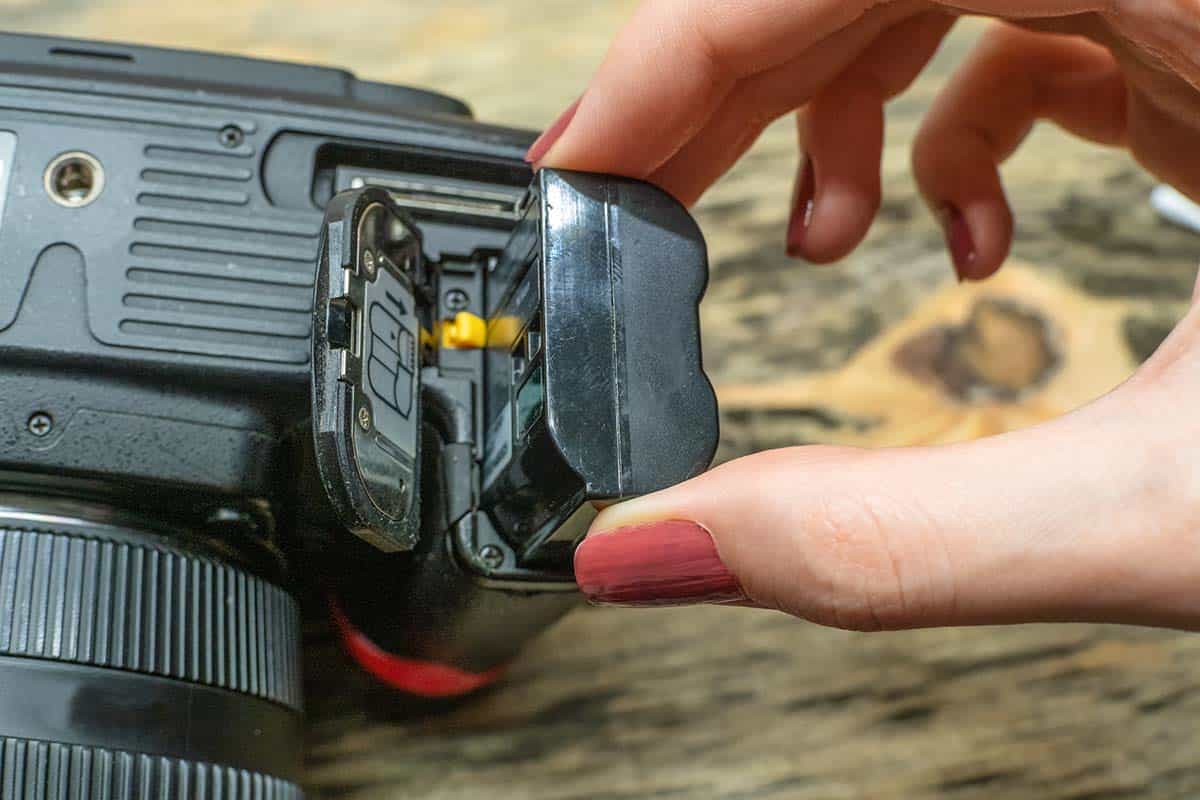
Cameras need power. Ordinarily, you’ll want to ensure extra batteries for your camera. Many people went out shooting without a backup battery and ended up with a dead camera.
You can’t always recharge away from home, so having extra batteries with a full charge is a best practice.
Camera batteries tend to be proprietary within brands and for specific models. I recommend getting the manufacturer’s battery brand because they often design specific features for their camera that 3rd party vendors don’t get right.
5: Lens Cloth and Blower
Ask anyone who wears glasses, and they’ll tell you that lenses get dirty. You need to clean them, and there are two important accessories.
The first is a lens blower. It’s a small rubber bulb that blows air through an attached tube. The idea is to get dust and debris off your lens before cleaning it with a cloth.
The next item is a microfiber cloth to clean any oils or fingerprints off your lens. You can also find lens wipes to do the same job. The benefit of lens wipes is that they’re single-use, moist towelettes that can clean your lens.
Conclusion
In this comprehensive guide, we’ve outlined the best cameras for blogging, depending on your needs. Whether you’re looking for an action camera to capture video and photos while moving, a mirrorless camera for great video quality, or a DSLR for still photography, we’ve got you covered.
We also looked at compact cameras as an option for those who don’t want to carry much weight. No matter your budget or needs, there’s a camera out there that’s perfect for you.
The best blogging cameras are the ones that get the results you need.
Working on building a great blog? Check out these tools to enhance your WordPress site:
BEST WordPress Plugins

